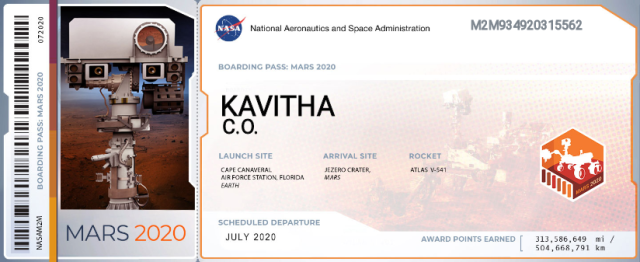Mean, Median and Mode are :
(A) Measures of deviation
(B) Ways of sampling
(C) Measures of control tendency
(D) None of the above
Answer: (D)
Research is
(A) Searching again and again
(B) Finding solution to any problem
(C) Working in a scient
ific way to search for truth of any problem
(D) None of the above
Answer: (C)
Which of the following is the first step in starting the research process?
(A) Searching sources of information to locate problem.
(B) Survey of related literature
(C) Identification of problem
(D) Searching for solutions to the problem
Answer: (C)
A common test in research demands much priority on
(A) Reliability
(B) Useability
(C) Objectivity
(D) All of the above
Answer: (D)
Action research means
(A) A longitudinal research
(B) An applied research
(C) A research initiated to solve an immediate problem
(D) A research w
ith socioeconomic objective
Answer: (C)
A reasoning where we start with certain particular statements and conclude with a universal statement is called
(A) Deductive Reasoning
(B) Inductive Reasoning
(C) Abnormal Reasoning
(D) Transcendental Reasoning
Answer: (B)
Which of the following variables cannot be expressed in quantitative terms?
(A) Socio-economic Status
(B) Marital Status
(C) Numerical Aptitude
(D) Professional Attitude
Answer: (C)
The essential qual
ities of a researcher are
(A) Spirit of free enquiry
(B) Reliance on observation and evidence
(C) Systematization or theorizing of knowledge
(D) All the above
Answer: (D)
In the process of conducting research ‘Formulation of Hypothesis” is followed by
(A) Statement of Objectives
(B) Analysis of Data
(C) Selection of Research Tools
(D) Collection of Data
Answer: (C)
A research paper is a brief report of research work based on
(A) Primary Data only
(B) Secondary Data only
(C) Both Pr
imary and Secondary Data
(D) None of the above
Answer: (C)
One of the following is not an open source software:
(A) DSpace
(B) Windows
(C) Green-stone
(D) Linux
Answer: (B)
Classification of all types of librar
ies has been made by-
(A) IFLA
(B) UNISIST
(C) UNESCO
(D) INSDOC
Answer: (C)
Reading centre’s, story hours, exhibitions and reading to literature are forms of …
(A) Extension service
(B) Service of a public library
(C) Both
(D) None
Answer: (C)
Informal self education is possible in what kind of library?
(A) National Library
(B) Public Library
(C) Specific Library
(D) College Library
Answer: (B)
……………………. Is a process of information
(A) Books
(B) CD-ROM
(C) Computers
(D) None of the above
Answer: (B)
Feedback mechan
ism is a part of which service?
(A) Reprography
(B) CAS
(C) Translation service
(D) SDI
Answer: (D)
What is the collection of terms or records in MARC called?
(A) System
(B) Network
(C) Website
(D) Database
Answer: (D)
What is Bibliometry?
(A) Function of L
ibrary Network
(B) Information Management Service
(C) Information Management Tool
(D) Library Service
Answer: (C)
Microchip was invented by…..
(A) Microsoft
(B) IBM
(C) DELL
(D) Intel
Answer: (D)
Information is…..
(A) Raw Data
(B) Processed Data
(C) Input data
Answer: (D)
Conference proceedings are considered as..................documents.
(A) Conventional
(B) Primary
(C) Secondary
(D) Tertiary
Answer: (B)
RSS feed is a tool of :
(B) Web 1.0
(C) Web 2.0
(D) Architecture
Answer: (C)
An appropriate source to find out descriptive information is................ .
(A) Bibliography
(B) Directory
(C) Encyclopedia
(D) Dictionary
Answer: (C)
One of the following search engine is exclusively meant for scientific information :
(A) Google
(B) Yahoo
(C) SCIRUS
(D) Altavista
Answer: (C)
Technological Gatekeeper is :
(A) A formal method of giving current awareness service
(B) A method of technology assessment and evaluation
(C) A process of transfer of technology
(D) An informal mechan
ism of keeping user informed of relevant development
Answer: (D)
The Farmington plan is associated with :
(A) Library Legislation
(B) Library Cataloguing
(C) Library Cooperation
(D) Library Indexing Service
Answer: (C)
UNESCO assisted Model Public Library in India is located at :
(A) Kolkata
(B) Delhi
(C) Mumbai
(D) Chennai
Answer: (B)
Mark the ‘odd one out’ :
(A) Cow-Calf principle
(B) Principle of osmosis
(C) Wall picture principle
(D) Whole organ principle
Answer: (B)
Shelf list facilitates................ .
(A) Classification
(B) Weeding out
(D) Documentation
Answer: (C)
Questionnaire is a :
(A) Research method
(B) Measurement technique
(C) Tool for data collection
(D) Data analysis technique
Answer: (C)
A periodical evaluation of an employee is done through........... .
(A) Job rotation
(B) Performance appraisal
(C) Refresher course
(D) Work guide
Answer: (B)
“Controlled Group” is a term used in.............. .
(A) Survey research
(B) Historical research
(C) Exper
imental research
(D) Descriptive research
Answer: (C)
‘Noise’ in Information Retrieval is due to............. .
(A) Precision
(B) Recall
(C) Relevant information
(D) Redundant information
Answer: (D)
What is the relationship between ISBD and cataloguing codes ?
(A) They are not related at all
(B) Cataloguing codes will include bibliographic description
(C) ISBD includes cataloguing rules
(D) ISBD can replace cataloguing rules
Answer: (B)
Tagging in web 2.0 application is called :
(A) Taxonomy
(B) Folksonomy
(C) Syndication
(D) Directory
Answer: (B)
Inductive logic proceeds from :
(A) General to General
(B) Particular to General
(C) General to Particular
(D) Part
icular to Particular
Answer: (B)
Which of the following is not a “Graphic representation” ?
(A) Pie Chart
(B) Bar Chart
(C) Table
(D) Histogram
Answer: (C)
The oldest and the largest Library Association in the world is............. .
(A) ALA
(B) LA
(C) IFLA
(D) IASLIC
Answer: (A)
Which of the following is not covered under Intellectual Property Rights ?
(A) Copyrights
(B) Patents
(C) Trade Marks
(D) Thesaurus
Answer: (D)
Ontology is................. .
(A) An Indexing Method
(B) Classification of Internet based documents
(C) Catalogu
ing of Internet based documents
(D) Documentation service
Answer: (B)
High Level Language is.................. .
(A) Disk space dependent
(B) O. S. dependent
(C) Machine independent
(D) Machine dependent
Answer: (C)
The transmission of receiver’s reaction back to the sender is known as................. .
(A) Noise
(B) Feedback
(C) Medium
(D) Source
Answer: (B)
Protocol means............... .
(A) Interchange of data between two devices
(B) Interchange of data between two computers
(C) Linkage between two computers
(D) Linkage between two devices
Answer: (D)
Which of the following is an ‘Acronym’ ?
(A) UNESCO
(B) UNO
(C) UNDP
(D) UGC
Answer: (A)
A set of rules that govern overall data communications system is popularly known as............... .
(A) Protocol
(B) Agreement
(C) Pact
(D) Memorandum
Answer: (A)
Staffing is concerned with providing and maintaining................resources.
(A) Physical
(C) Human
(D) Financial
Answer: (C)
Which of the following is not true about e journals ?
(A) They are distributed through digital methods
(B) They also have editors or editorial boards
(C) They are publications of serial nature
(D) They are always free of cost
Answer: (D)
What is the meaning of 'Translation Pools' ?
(A) Details about the names of translation experts
(B) Details about the addresses of the translators
(C) Agency of the names of translation experts
(D) None of these.
Answer: (C)
How is stochastic equation of information solved ?
(A) By statistical rules
(B) By dynamic rules
(C) By statistical and dynamic rules
(D) None of these.
Answer: (C)
Whether Library is a system?
(A) Yes, it has var
ious sections as sub-systems coordinating each other forming a system
(B) No, it cannot be a system
(C) It is quite impossible
(D) Library is separate from a system.
Answer: (A)
















